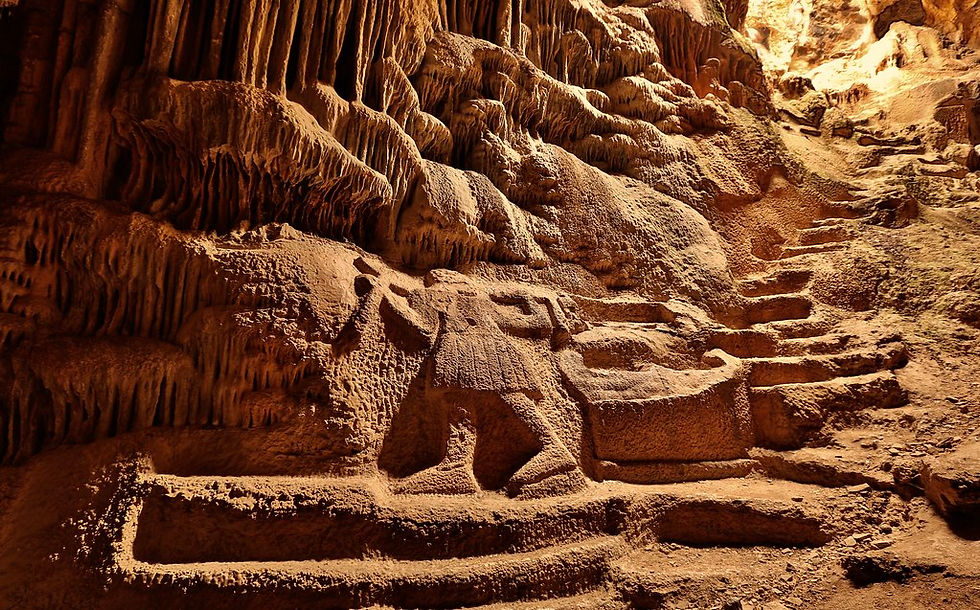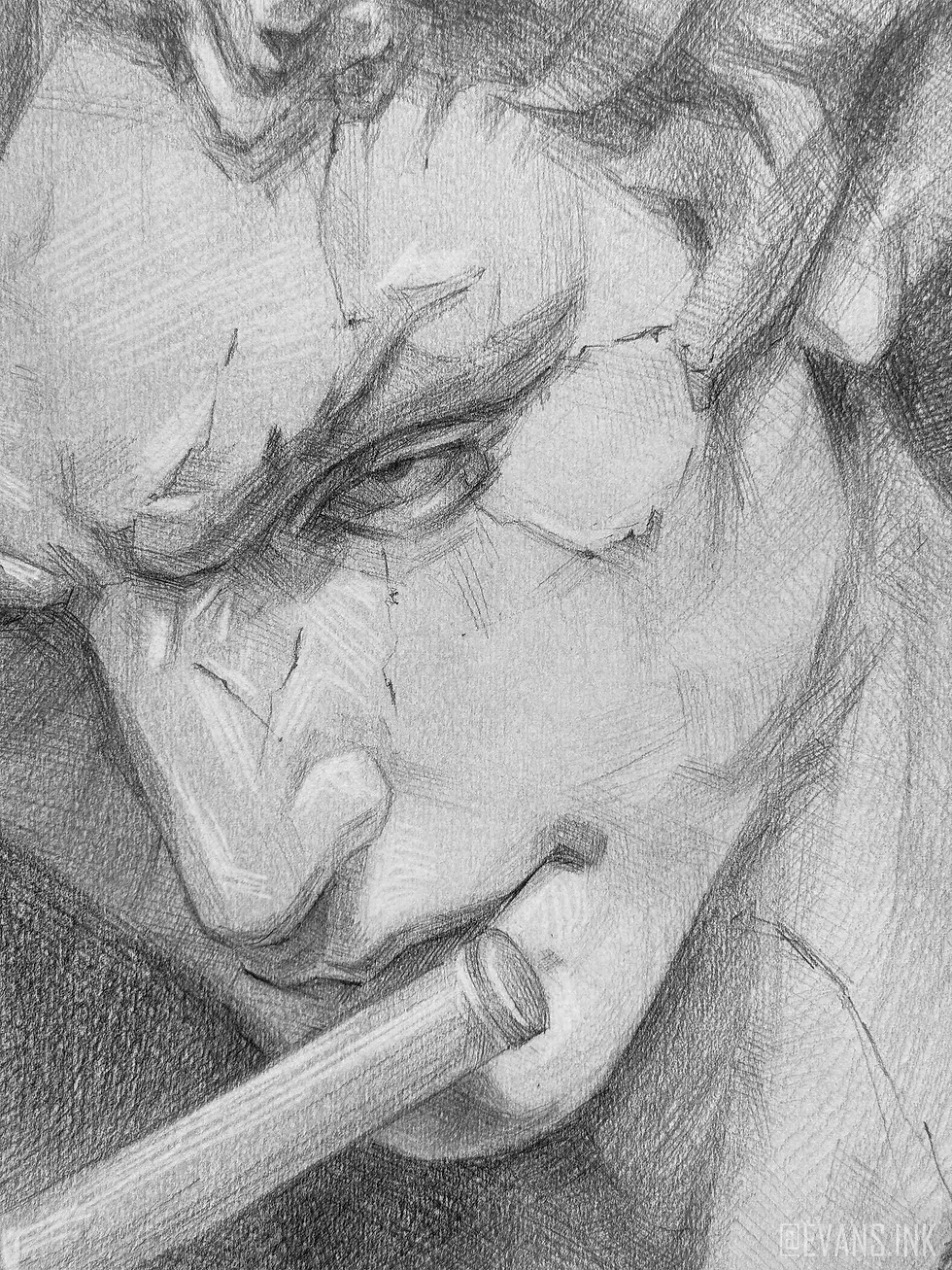Pan, the Greek God of Nature: Myths, Sanctuaries & Psychological Meaning
- Yana Evans

- Jun 20
- 6 min read
Updated: Aug 5
Pan is one of the most ancient and distinctive figures in Greek mythology—a rustic god associated with shepherds, flocks, wild nature, fertility, and music. Unlike the more formalized Olympian deities, Pan’s cult remained grounded in the rural life of Arcadia, a mountainous region in the central Peloponnese. His character, untamed and instinctual, persisted even as the Roman Faunus took on more prophetic qualities. Pan never lost his raw edge.
He was depicted with the legs and horns of a goat, embodying a fusion of human and animal traits. His mythological parentage varies: most sources, including the 6th-century BCE Homeric Hymn to Pan, describe him as the son of Hermes and a nymph—possibly Dryope or Penelopeia—though other traditions link him to Zeus or Apollo. According to myth, his goat-like appearance so startled his mother that she fled, prompting Hermes to bring the infant to Olympus, where the gods laughed at his form. Yet Pan never stayed in the heavens; his domain was the forests, highlands, and pastures of the mortal world.
Pan's Worship and Daily Life of His Followers
Pan’s cult was never centralized or state-sanctioned. Instead, his worship persisted in secluded rural areas, often outdoors—in caves, groves, rocky outcrops, or highland pastures. The people who honored him were shepherds, goatherds, farmers, and transhumant herders whose lives were shaped by the land’s unpredictability. Pan was invoked for fertility—of both livestock and land—protection from predators, and successful births of animals.
Offerings were humble but meaningful: goat milk, cheese, barley cakes, figs, wine, or small terracotta figurines of animals or Pan himself. These sacrifices came at personal cost—milk and cheese were daily staples, and wine symbolized agricultural labor and seasonal change. By giving them up, worshippers acknowledged the precarious balance they lived in and sought the god’s favor in return.
Caves such as the Cave of Pan on Mount Hymettus near Athens, the Corycian Cave above Delphi, and sanctuaries on Mount Lykaion in Arcadia became centers of local veneration. Here, rituals involved music, dance, and offerings, often held at dawn or dusk when shepherds moved their flocks. The syrinx, or pan flute—named after the nymph Syrinx—was played in his honor. Its melancholic, breathy tone symbolized both erotic longing and transformation.
Pan’s cult was closely tied to the rhythm of seasons. Spring marked a sacred period, not just symbolically but economically and socially. In much of Arcadia and central Greece, families practiced transhumance—seasonal livestock migration from lowland winter settlements to upland summer grazing grounds. This tradition, dating back to at least the Archaic period, followed established paths that passed Pan’s sacred places. These migration routes are still traceable today in regions like the Parnon and Taygetos ranges.
Families moved together, building temporary shelters from stone bases, wooden frames, and animal hides or woven cloth. Meals included flatbreads, lentils, olives, cheese, wild herbs, and sometimes dried meat. Clothing was functional: wool chitons, cloaks against the chill, and leather sandals or boots for rocky terrain. In the evenings, stories were shared, flutes were played, and offerings were left at natural shrines. Children participated in rituals and were taught reverence for the forces embodied by Pan.
As lilacs and other wildflowers bloomed across the hills in early spring, they signaled more than aesthetic renewal—they marked the reawakening of life rhythms that Pan presided over: fertility, desire, and return.
Part of the Series "Stories of Lilacs"
The Trickster, the Fear-Bringer, and the Archetype
Pan’s presence wasn’t always welcome. His freedom, while celebrated by rural people, unsettled urban sensibilities. His sudden appearances in lonely places were thought to cause irrational terror, especially among travelers and soldiers. The term “panic” derives from panikon deima, the fear attributed to Pan. Herodotus records that the Athenians believed Pan caused enemy troops to flee during the Battle of Marathon in 490 BCE through supernatural fear.
His mythological behavior often leaned toward mischief and transgression. Like his father Hermes, he embodied trickster traits—seducing nymphs, frightening intruders, and even assisting the gods during their battles by sowing confusion. He blurred moral lines, acting according to impulse rather than order.
To those embedded in nature’s rhythms, he was a force of joy and renewal. To others, especially in the structured city-states, he was the embodiment of chaos, an unwelcome reminder of what civilization tried to contain: lust, spontaneity, unpredictability, the wild.
Psychological Legacy and Modern Reinterpretation
From the 18th century onward, Pan began to appear in Western art and literature not just as a mythological figure, but as a psychological symbol. Romantic poets such as Wordsworth and Swinburne embraced him as an emblem of sublime nature—beautiful, primal, and unnerving. He stood for humanity’s estrangement from the natural world.
In the 20th century, psychologists, notably Carl Jung, interpreted Pan as an archetype of the unconscious—the repressed instincts, fears, and desires hidden beneath rational thought. For Jung, Pan was part of the “shadow self,” the raw psychic material that modern individuals often ignore, only to encounter it in dreams, fears, and irrational impulses.
This interpretation helped reframe Pan as a mirror—not of chaos, but of the forgotten. He became not a pastoral decoration, but a symbol of psychological integration: to accept Pan was to acknowledge instinct, mortality, and the truth that not all order is healthy, and not all disorder is harmful.
Greek God of Nature, Spring, and the Continuing Relevance
As lilacs bloom each spring, their scent—soft, fleeting, and difficult to define—echoes the sensations Pan once embodied: awakening, longing, vitality. His myths remind us that transformation is often born of conflict, that beauty can emerge from loss, and that fear can reveal what lies beneath the surface.
Pan is not a god many would worship today in ritual, but his image lingers in psychology, art, and cultural memory. He stands as a reminder of the tension between instinct and control, of the necessity of balance between the civilized and the untamed. When the landscape begins to green again and the air thickens with the smell of blossoms, it’s not just nature returning—it’s something within us, too.
Where the Wild God Sleeps: Sacred Sites of Pan
To worship Pan—the untamed god of wild places—one must be a wild-hearted seeker. His sanctuaries were never built in cities or polished temples, but hidden deep in forests, caves, and rugged mountain slopes. Reaching them meant leaving behind comfort and control, and stepping into the raw pulse of nature itself. Remote, sacred, and steeped in earthy silence, these sites still echo with his presence—for those willing to follow the call.
Mount Lykaion (Arcadia, Greece) - Pan's Sanctuary

Mount Lykaion, mythologized as the birthplace of Zeus, was also a key site of Pan’s worship. Its wild terrain suited the god of nature and instinct, and the Lykaia festival combined athletic games with rustic rites held in his honor.
Archaeologist Eleni Markopoulou highlights how the site’s simplicity—altars, votives, and a hillside stadium—reflects Pan’s raw, untamed spirit. Today, visitors can hike the mountain and still feel the presence of a god rooted more in wind and stone than marble and myth.
You can also discover the full map of sanctuary HERE.
The Cave of Pan at Vari (Attica, near Athens)

Carved into the cliffs of Mount Hymettus, this ancient shrine to Pan and the Nymphs dates back to the 5th century BCE. Once a site of mystery cults and ecstatic rites, it now lies within a highly protected archaeological zone.
Access is limited—permission is required, and descent is typically reserved for researchers. Yet even from a distance, visitors can glimpse faint inscriptions and reliefs, remnants of a sacred place where desire, nature, and myth still linger in the stone.
The Cave of Pan and the Nymphs at Delphi (The Corycian Cave)

This small cave, located near the Sanctuary of Delphi and close to the Corycian Cave, was once sacred to Pan and local mountain spirits. It has been a ritual site since the Neolithic period, long before Delphi became famous for Apollo’s oracle. While Apollo symbolized light and order, Pan represented instinct, ecstasy, and emotional truth.
The surrounding area is rich in natural beauty—mountains, forests, and clear air make it ideal for nature lovers. Though remote, the site can be visited through organized hiking tours and guided expeditions, which occasionally include access to this hidden, ancient sanctuary.
Many of Pan’s sanctuaries are located in remote, mountainous areas. If you're planning to visit, be sure to research the site in advance, check access conditions, and consider going with a guided group. Always take your health, safety, and physical preparedness seriously—these wild places are beautiful, but not without their challenges.

































